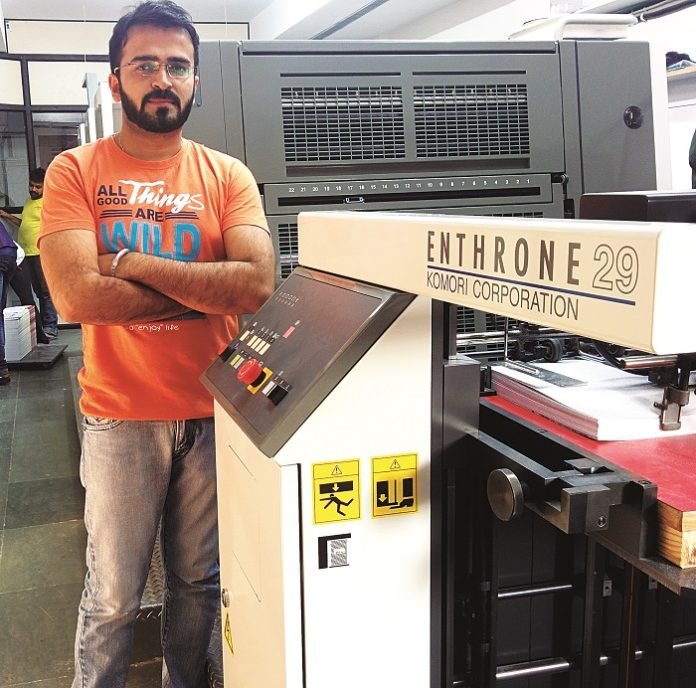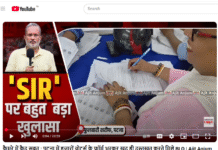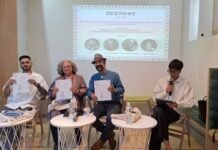Mayur Gandhi, the business development executive of Leo Prints says that in the hugely competitive environment of Mumbai’s printing industry, it is necessary to invest in new technology to have an edge.
“Our new Komori Enthrone with its automation features gives us the precision needed for today’s quality printing market. Whereas I could do a short-run job on my Heidelberg MOV in 40 minutes, now with the Komori Enthrone I can do two short-run print jobs in 45 minutes,” he says. “Plus, I now have the high quality output of an automated Enthrone with Komori’s TCC system and the 20.75 x 30-inch size that allows me to enter the magazine market with a great deal of efficiency and productivity.”
Leo Prints occupies a 3,000 square feet gala at the centrally located Shah and Nahar Industrial Estate in Lower Parel in Mumbai. Lower Parel is a communications and printing hub and its multi-storey industrial estates with standard sized galas provide every imaginable process and service to the print and advertising industry. While the thermal plates for its multicolor offset presses are reliably outsourced from nearby suppliers, Leo’s state-ofthe-art plant is equipped with printing and finishing equipment to supply every type of commercial print including brochures, posters, danglers and buntings for FMCG and pharma companies. Since some of these products require special fabrication, the company prefers to keep the finishing and fabrication in-house.
Leo Prints installed the 4-color Komori Enthrone 429 press just a few months ago, in October 2015. Mayur Gandhi recounts, “Earlier we had a 4- color Heidelberg MOV press with Alcolor dampening and a maximum sheet size of 19 x 25 inches. However, with our new Komori Enthrone 429 we can now put in a maximum sheet size of 530 x 750 mm (20.75 x 30 inches). A unique feature of the Enthrone 429 is its fully automatic plate-changing system designed specifically for a halfsize press, which eliminates the need for a tail bend on the plate and is capable of changing four plates in just two minutes. Sheets ranging from 80 gsm to 350 gsm can be printed at the speed of 13,000 an hour.” Gandhi adds that the compact size and low electricity consumption are also important cost saving features of the press in an industrial estate where not on space but air-conditioning it is also expensive.
Leo currently runs the press from 9,000 to 10,000 sheets an hour and is very pleased with the automation features that allow it to run more short-run jobs with high reproduction accuracy. The Enthrone 29 employs an array of double-size impression and transfer cylinders to ensure consistent performance on a diverse work mix of short-runs with paper thicknesses from 0.04 mm to 0.6 mm.
The CIP-3 data generated while outputting the plates on the CtP is used in print production format (PPF) to calculate area coverage values for each ink zone using a pen drive on the press side module of the Enthrone 29. The press is equipped with a digital preset system that predicts the optimal ink fountain values for each plate, quickly and accurately for significant savings in press time and materials.
This technique brings 90% agreement between the initial proof and the final print and saves considerable makeready with only fine tuning of the final output left to the operator. At the same time, the quality of the print is greatly standardized. “As the press has reduced the makeready time and waste, we can meet the demands of short-run jobs. Currently we meet the demands of medical publishing but with the brand new press we are also planning to expand into fashion and jewellery magazines,” concludes Gandhi.
















